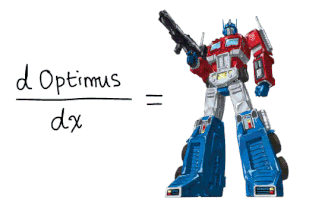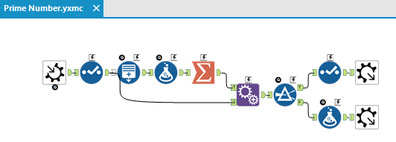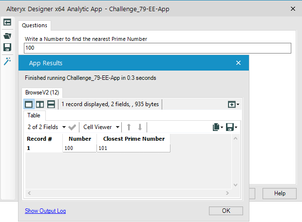Weekly Challenges
Solve the challenge, share your solution and summit the ranks of our Community!Also available in | Français | Português | Español | 日本語
IDEAS WANTED
Want to get involved? We're always looking for ideas and content for Weekly Challenges.
SUBMIT YOUR IDEA- Community
- :
- Community
- :
- Learn
- :
- Academy
- :
- Challenges & Quests
- :
- Weekly Challenges
- :
- Challenge #79: Find the Closest Prime Number
Challenge #79: Find the Closest Prime Number
- Subscribe to RSS Feed
- Mark Topic as New
- Mark Topic as Read
- Float this Topic for Current User
- Bookmark
- Subscribe
- Mute
- Printer Friendly Page
- Mark as New
- Bookmark
- Subscribe
- Mute
- Subscribe to RSS Feed
- Permalink
- Notify Moderator
View last week's challenge HERE.
This week's challenge is simple to grasp, but more difficult to execute. This week, let's make an application that finds the closest prime number to a users input.
A prime number is a number that has two positive divisors - 1 and itself.
Without the use of a lookup table, please build an app that takes a user-entered number and returns the closest prime number to the entered number.
Fun fact: this post went live on 07/31/2017 - a very prime day indeed!
- Mark as New
- Bookmark
- Subscribe
- Mute
- Subscribe to RSS Feed
- Permalink
- Notify Moderator
I hope that I didn't make my life harder with this prime problem. I created an application that on output answers your question, plus it states:
Is the number itself PRIME?
What is the previous largest PRIME number?
What is the next largest PRIME number?
On input I permit values up to 10,000.
Cheers,
Mark
Chaos reigns within. Repent, reflect and restart. Order shall return.
Please Subscribe to my youTube channel.
- Mark as New
- Bookmark
- Subscribe
- Mute
- Subscribe to RSS Feed
- Permalink
- Notify Moderator
- Mark as New
- Bookmark
- Subscribe
- Mute
- Subscribe to RSS Feed
- Permalink
- Notify Moderator
Can we use R?

using the accepted solution at:
https://stackoverflow.com/questions/19767408/prime-number-function-in-r
to check if a number is prime
I made the attached primarlly in R
1. the R code will return the previous and next prime number
# Expectes a field named "Number"
# Adds the fields "Prev_Prime" and "Next_Prime"
# Function to check if a number is prime
is.prime <- function(n){ n == 2L || all(n %% 2L:max(2,floor(sqrt(n))) != 0)}
# Function to get next prime
next.prime <- function(n){
while(! is.prime(n)){n<-n+1}
return(n)}
# Function to get previous prime
prev.prime <- function(n){
while(! is.prime(n)){n<-n-1}
return(n)}
# Read the Table in
the_data<-read.Alteryx("#1", mode="data.frame")
# Compute the previous prime number
the_data<-cbind(the_data,Prev_Prime = mapply(function(n) prev.prime(n),the_data$Number))
# Compute the next prime number
the_data<-cbind(the_data,Next_Prime = mapply(function(n) next.prime(n),the_data$Number))
# Output the data
write.Alteryx(the_data, 1)2. Formula tool to compute the closest, returning the next when they are equidistant:
IF [Number]-[Prev_Prime]<[Next_Prime]-[Number] THEN [Prev_Prime] ELSE [Next_Prime] ENDIF
- Mark as New
- Bookmark
- Subscribe
- Mute
- Subscribe to RSS Feed
- Permalink
- Notify Moderator
My solution attached! Definitely borrowed the concept of testing for closest prime in either direction from @MarqueeCrew (thanks Mark!), but definitely a different path to the final solution. Added one more calculation for which number was technically "closer": Number itself, the next prime, the previous prime, or tied.
Happy Day o' Prime Numbers!
NJ
- Mark as New
- Bookmark
- Subscribe
- Mute
- Subscribe to RSS Feed
- Permalink
- Notify Moderator
- Mark as New
- Bookmark
- Subscribe
- Mute
- Subscribe to RSS Feed
- Permalink
- Notify Moderator

- Mark as New
- Bookmark
- Subscribe
- Mute
- Subscribe to RSS Feed
- Permalink
- Notify Moderator
Here my Solution!!!
Into this app you can write your number and it finds the nearest prime number (above or below the chosen number).
- Mark as New
- Bookmark
- Subscribe
- Mute
- Subscribe to RSS Feed
- Permalink
- Notify Moderator
1. Check if number is prime (by checking the number doesn't divide cleanly by any number from 2 up to the square root of the number)
2. If not prime -> check number +/- 1, then +/- 2, then +/- 3, etc. Do this by using an iterative macro and using number = number * (-1)^n x n where n is the number of iterations.


- Mark as New
- Bookmark
- Subscribe
- Mute
- Subscribe to RSS Feed
- Permalink
- Notify Moderator
Ah lovely @JoeM! Spent the last week playing with iterative macros so seemed like an obvious choice when I saw the challenge. Solution below:
 Simple App Interface
Simple App InterfaceEach iteration adds and takes the Iteration number from the original number and then runs a simple Primality test on it (looking at the modulus with each possible divisor) - the first number that passes through with only 2 results with a modulus of 0 is passed out the macro and ends the iteration.
 Iterative Prime Macro
Iterative Prime MacroThoroughly enjoyable.
Luke
Alteryx Certified Partner with Keyrus UK
-
Advanced
302 -
Apps
27 -
Basic
158 -
Calgary
1 -
Core
157 -
Data Analysis
185 -
Data Cleansing
5 -
Data Investigation
7 -
Data Parsing
14 -
Data Preparation
238 -
Developer
36 -
Difficult
87 -
Expert
16 -
Foundation
13 -
Interface
39 -
Intermediate
268 -
Join
211 -
Macros
62 -
Parse
141 -
Predictive
20 -
Predictive Analysis
14 -
Preparation
272 -
Reporting
55 -
Reporting and Visualization
16 -
Spatial
60 -
Spatial Analysis
52 -
Time Series
1 -
Transform
227
- « Previous
- Next »





